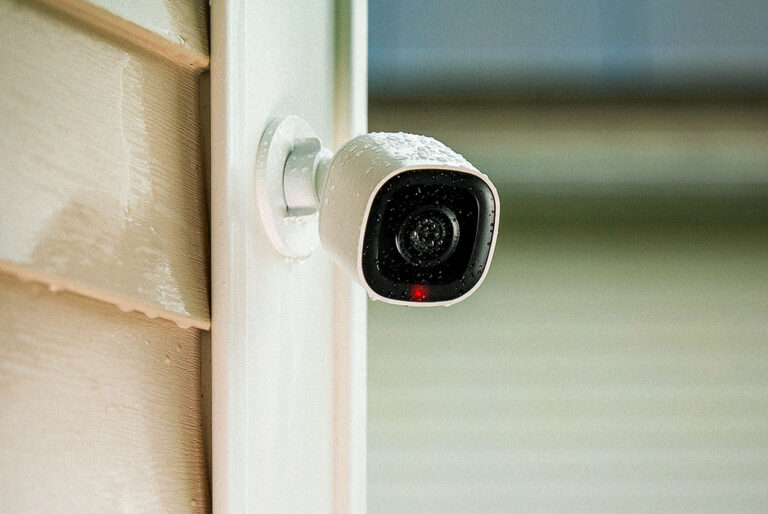Homeowners are no strangers to the need for security. With a mix of bustling cities and quiet suburban neighborhoods, keeping homes safe has become a top priority. And here’s the good news: wireless security cameras are making it easier than ever to protect what matters most. But the real magic happens when these cameras are seamlessly integrated into smart homes.
Table of Contents
ToggleUnderstanding Smart Homes
So, what exactly makes a home “smart”? In simple terms, it’s when your everyday systems, like lighting, heating, appliances, and security are all connected and controlled through a central hub or app. Here in Maryland, where many homeowners are upgrading older homes with modern conveniences, smart systems offer comfort, efficiency, and safety.
The Rise of Wireless Security Cameras
Gone are the days when setting up cameras meant drilling holes and running messy wires. Wireless security cameras are lightweight, flexible, and connect directly to Wi-Fi. This kind of adoption has skyrocketed as residents seek convenience, affordability, and peace of mind.
Benefits of Wireless Security Cameras
- Quick Installation: Most homeowners especially those who are tech-savvy, can set them up in under an hour.
- Remote Monitoring: Whether you’re at the office in Bethesda or traveling, live feeds are just a tap away.
- Scalability: Start small and add more cameras as your needs grow.
Smart Home Ecosystem: The Heart of Integration
Imagine your camera detecting motion at the door, and your smart lights automatically turn on while your smart speaker announces a visitor. That’s the beauty of integration. Wireless cameras don’t just record; they become part of an intelligent home ecosystem.
Popular Features Among Homeowners
- Night Vision: Crucial for suburban streets with minimal lighting.
- Motion Alerts: Instant phone notifications when activity is detected.
- Cloud vs. Local Storage: Flexibility depending on your security and privacy preferences.
Wireless vs. Wired Cameras: Which is Right for You?
For historic homes, wireless cameras are less invasive and easier to install. However, wired systems may offer more reliability for businesses or larger estates. It all comes down to balancing convenience with performance.
How Integration Improves Everyday Life
Think of it like having a digital watchdog. You’ll get alerts when your package is delivered, keep an eye on kids playing in the backyard, or even monitor your small business after hours. Integration makes security feel less like a chore and more like a lifestyle upgrade.
Challenges of Integration
Setting up a wireless security system isn’t always smooth sailing. Weak Wi-Fi can disrupt video streams, cybersecurity risks are a real concern, and managing multiple devices can feel overwhelming. The solution? Choose trusted brands and make sure your home network is secure.
Maryland-Specific Security Needs
We all know Maryland weather keeps us on our toes; steamy summers, snowy winters, and those unpredictable in-between days. That means your security cameras need to be tough and weather-resistant to keep an eye on things no matter what Mother Nature throws at us. And don’t forget; local laws are clear about respecting privacy, especially in neighborhoods where homes are cozy and close-knit. Keeping your security smart and neighbor-friendly is key.
Smartphone Apps and Control
Today’s cameras come with intuitive apps that allow you to monitor, record, and share access with family members. Anyone will love apps that combine multiple smart devices in one dashboard, making life simpler.
Future of Wireless Security in Smart Homes
The future looks promising. Cameras are now coming with AI that distinguishes between a delivery driver and a stray cat. Energy-saving models are reducing power consumption, and Maryland’s growing “smart neighborhoods” are adopting connected security on a community-wide scale.
Cost Considerations
You don’t have to break the bank. Wireless cameras range from budget-friendly models perfect for small apartments to premium solutions ideal for larger homes. Maryland homeowners often weigh professional installation costs against the ease of DIY setups.
Tips for Seamless Integration
- Pick a brand that works well with your existing devices.
- Ensure your Wi-Fi covers all areas you want monitored.
- Consider professional installation if you’re not tech-savvy.
Conclusion
Seamlessly integrating wireless security cameras with smart homes isn’t just a trend—it’s the future of safety and convenience. For Maryland homeowners, this combination delivers peace of mind, easy access, and smarter living. As technology continues to evolve, the homes here are becoming safer, more efficient, and more connected than ever.
FAQs
1. Do wireless cameras work during power outages?
Most require power, but some have backup batteries to keep recording during short outages.
2. How secure are Wi-Fi-connected cameras?
With strong passwords, encryption, and software updates, they’re very secure.
3. Can I integrate cameras with existing smart home systems?
Yes, most modern cameras work with major smart home ecosystems like Alexa, Google Home, and Apple HomeKit.
4. Are wireless cameras expensive to maintain?
Not at all. The main costs are cloud storage subscriptions, which are usually affordable.
5. What’s the best option for Maryland weather?
Choose weatherproof cameras designed to handle humidity, snow, and heavy rain.







